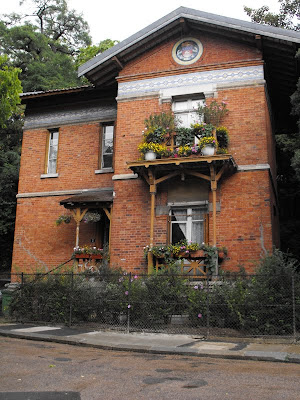The patchwork quilt created by ubiquitous fence lines around our neighborhoods indicate how covetous we are of sheltering our outdoor rooms from prying eyes and nosy neighbors.
In the garden world, these barriers translate into secret gardens, walled gardens, and a sense of mystery and awe when one encounters a private garden. We feel privileged to witness that which is usually screened from the world, privy to some bit of classified information that heightens our own sense of self-worth or at least titillates our desire to know what others do behind closed doors. Perhaps this is why garden tours are so popular. If, to be kind, a love of plants and desire to expand one's horticultural, botanical, and design horizons instigates the drive to attend such a tour, then entering others' private spaces is icing on the proverbial cake.
In other words, garden touring is but another manifestation of the "keeping up with the Jones'" phenomenon.
But garden tours--for those who list their gardens on such tours--are also manifestations of a deep psychological need for our privacy to be violated, penetrated by sustained gazes. This is one of the many contradictions wrapped up in the human condition.
We need publicity as much as we need privacy. We crave recognition, if not in our gardening lives then in our professional lives and in our social world. Social media like Facebook only exacerbates this tendency, and in (or on?) Facebook we witness many a publicization of private things (and much boasting).
Paris and Parisians no doubt publicly tantalize with balcony gardens and festooned windows with geraniums, ivies, flowering vines, and potted plants wired to the building.
But in terms of garden spaces, well, Parisians love, covet, and guard their privacy. As with Belgians, they insulate their gardens from nosy tourists and general public view.
Disastrous.
They even adorn their wrought iron fences and car port gates with material to prevent unwanted glimpses into their secret gardens.
But leave it to me to find holes into which to stick my camera to capture what's beyond,
boxes on which to climb to get that garden shot (and capture an unknowning gardener at work),
and the one suburban Parisian house without a fence.
Garden privacy be damned.
But in the end, no matter my incessant need to see others' gardens and understand their design principles, criteria for plant selection, and motivation behind gardening, I deeply get their need to insulate their creations from intrusions. In other words, I can dish it, but can't take it. (Confessions be damned!)
**And many thanks to Erin B. for her felicitous renaming of this entry.**












































